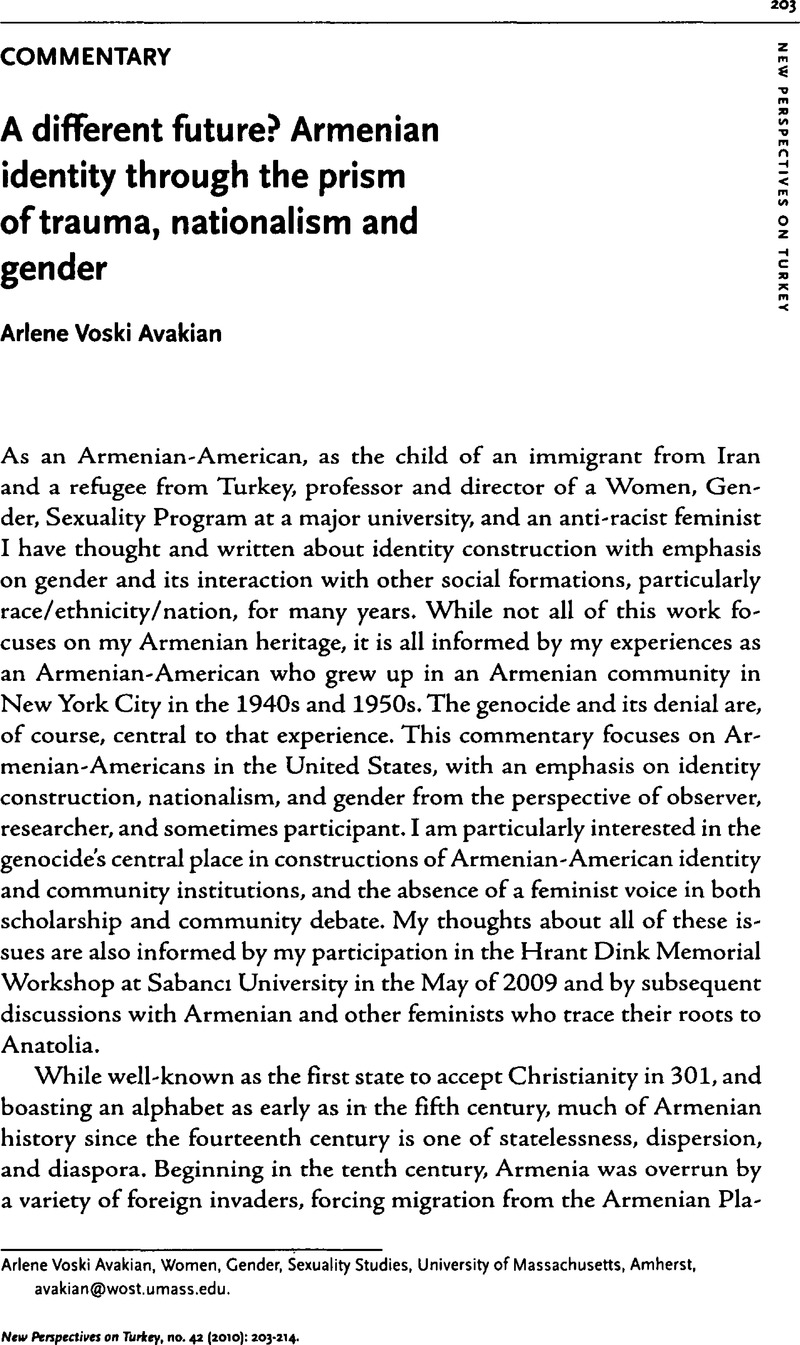Crossref Citations
This article has been cited by the following publications. This list is generated based on data provided by Crossref.
Souleimanov, Emil
Ehrmann, Maya
and
Kopeček, Vincenc
2013.
Uznání genocidy Arménů jako téma politického diskursu Arménie, Turecka a vybraných zemí EU.
Středoevropské politické studie Central European Political Studies Review,
Vol. 15,
Issue. 4,
p.
247.
Tüysüzoğlu, Göktürk
2014.
How Demand for Security Influence the Shaping of Foreign Policy: Using the Theory of Securitisation to Understand Armenia–Iran Relations.
Journal of Eurasian Studies,
Vol. 5,
Issue. 2,
p.
192.
Altınay, Ayşe Gül
2014.
Centennial challenges: Denationalizing and gendering histories of war and genocide.
European Journal of Women's Studies,
Vol. 21,
Issue. 3,
p.
307.
Jarosz, Ewa
2016.
Food for Thought: A Comparative Analysis of Eating Behavior in the United States, Poland, and Armenia.
Food, Culture & Society,
Vol. 19,
Issue. 4,
p.
655.
Six-Hohenbalken, Maria
2019.
May I be a sacrifice for my grandchildren—transgenerational transmission and women’s narratives of the Yezidi ferman.
Dialectical Anthropology,
Vol. 43,
Issue. 2,
p.
161.
Ghoogasian, Aram
2021.
What is Armenia to Me? Diasporicity in the Works of William Saroyan.
Études arméniennes contemporaines,
p.
183.
Aslan, Nora Tataryan
2021.
Facing the Past.
Journal of Middle East Women's Studies,
Vol. 17,
Issue. 3,
p.
348.
Muti, Öndercan
and
Gürpınar, Öykü
2023.
“I think it is [the] mother who keeps things going”: The gendered division of labor in the transmission of memory of the Armenian Genocide.
Memory Studies,
Vol. 16,
Issue. 5,
p.
1173.





